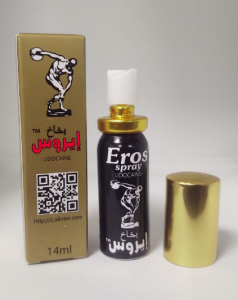Custom T-shirts have always been a canvas for creativity and self-expression. Whether it’s for a family reunion, a company event, or just to showcase your unique style, the right printing method can make all the difference. Enter DTF transfer printing—a groundbreaking technology that’s reshaping how we think about custom apparel. With its ability to produce vibrant colors and intricate designs on various fabrics, this innovative process is setting new standards in the world of garment decoration. Curious about what sets DTF apart? Let’s dive into everything you need to know about this exciting trend in custom T-shirt printing.
What is DTF Transfer Printing?
DTF transfer printing, or Direct-to-film transfer printing, is a relatively new technique that has captured the attention of custom apparel makers. Unlike traditional methods where ink is applied directly onto the fabric, DTF involves printing designs onto a special film.
The process begins by using high-quality inks that are printed on this film. Afterward, an adhesive powder is sprinkled over the wet ink and heat-cured to create a strong bond. Once prepared, the design can be transferred onto the garment using a heat press.
This method allows for incredible detail and vibrant color reproduction. It works well on various materials, making it versatile for countless applications. Whether you’re aiming for bold graphics or intricate patterns, DTF provides reliable results without compromising quality. As technology evolves, so does its potential in custom T-shirt production.
The Advantages of DTF Transfer Printing
DTF transfer printing stands out for its versatility. It allows you to print on various fabrics, from cotton to polyester blends. This flexibility opens up endless design possibilities.
Another significant advantage is the vibrant color output. DTF inks provide bright and bold hues that can make any design pop. The resulting prints are eye-catching and engaging.
Durability is also a key benefit. Prints created through DTF technology withstand multiple washes without fading or cracking, ensuring longevity and satisfaction for customers.
Additionally, the process requires minimal setup compared to traditional methods like screen printing. This efficiency means quicker turnaround times for custom orders—ideal for businesses looking to meet tight deadlines.
Imagine being able to produce intricate designs with ease while maintaining high-quality results. That's where DTF truly shines, allowing creatives freedom in their artistic expression without compromise.
The Process of DTF Transfer Printing
DTF transfer printing begins with designing your artwork on a computer. Graphic design software allows creators to bring their visions to life. Once the design is finalized, it’s printed onto a special DTF film using an inkjet printer.
After printing, the next step involves applying a powdered adhesive to the wet ink. This powder sticks only where the ink is present, creating a bond that will hold during heat application.
The sheet then goes through curing in either an oven or heat press, solidifying the adhesive and preparing it for transfer.
Once cured, you can place the printed film on your fabric of choice and apply heat with a press. The combination of temperature and pressure ensures vibrant colors adhere perfectly to various materials.
This process offers flexibility for intricate designs while maintaining high durability once transferred.
Designing Custom T-shirts with DTF Transfer Printing
Designing custom T-shirts with DTF transfer printing opens up a world of creativity. The vibrant colors and intricate details truly stand out, allowing designers to express their unique vision.
Artists can create stunning graphics using software like Adobe Illustrator or Photoshop. Once the design is ready, it’s printed onto a special film that captures every fine detail.
The beauty of DTF lies in its versatility. Whether you want bold images or subtle patterns, this method accommodates various styles effortlessly. Users can experiment with textures and gradients without worrying about limitations.
After printing on the film, an adhesive layer is applied to ensure durability. This process makes sure your designs remain vivid even after multiple washes.
Plus, you’re not limited to cotton fabrics alone! DTF transfers work well on polyester blends and other materials too—making them perfect for any apparel line or personal project.
How DTF Transfer Printing Compares to Other Methods
DTF transfer printing stands out against traditional methods like screen printing and heat transfer. Unlike screen printing, which can be cumbersome for intricate designs, DTF allows for vibrant colors and fine details without sacrificing quality.
Heat transfer might limit fabric options, but DTF works on a wide range of materials. This versatility means you can print on cotton, polyester, or blends with ease.
Another notable difference is the setup time. Screen printing requires extensive preparation and multiple screens for different colors. With DTF, you simply print your design once and apply it directly to the garment.
Additionally, durability becomes a critical factor in comparison. DTF prints are known for their long-lasting nature; they withstand multiple washes without fading or cracking—an essential trait for custom apparel that sees regular use.
As demand grows for diverse designs at lower costs, understanding these distinctions helps businesses choose wisely among available techniques.
Tips for Choosing the Right DTF Transfer Printer
Choosing the right DTF transfer printer can feel overwhelming. Start by assessing your printing volume needs. If you plan to produce large quantities, opt for a model designed for high output.
Look at print quality as well. Not all printers deliver the same level of detail or color vibrancy. Check sample prints before making a decision.
Consider ease of use too. A user-friendly interface can save time and frustration during those busy production days.
Don’t forget about maintenance requirements. Some printers demand more upkeep than others, so factor this into your choice.
Examine customer support options available with the printer brand. Reliable assistance can make a significant difference when troubleshooting issues or seeking advice on best practices.
Conclusion: The Future of Custom T-shirt Printing with DTF Transfer Technology
DTF transfer printing is paving the way for a new era in custom T-shirt production. Its ability to produce vibrant, durable designs makes it an attractive option for businesses and creators alike. The efficiency of the process streamlines production times while ensuring high-quality results.
As more people explore personalized fashion, DTF technology stands out by offering versatility that meets various design needs. This method allows for intricate details and bold colors that can elevate any piece of clothing.
Looking ahead, as advancements continue to emerge in printing technology, DTF will likely play a significant role in shaping the future landscape of custom apparel. With its unique qualities and benefits, it’s clear why many are excited about what lies ahead in this dynamic industry.






